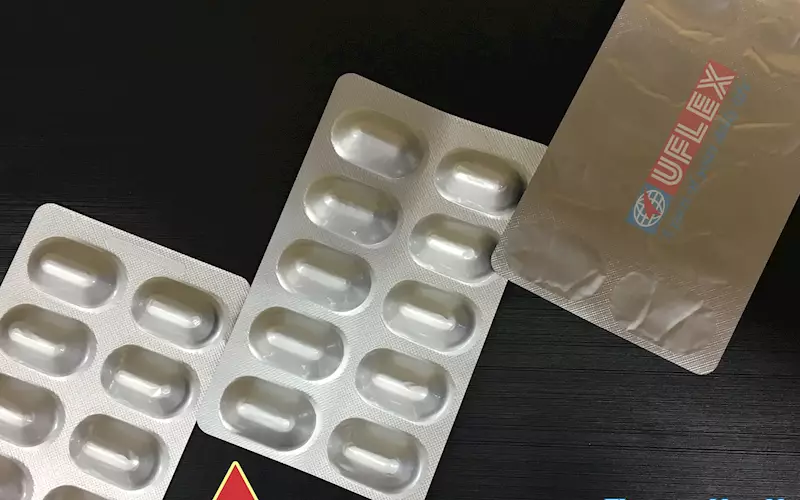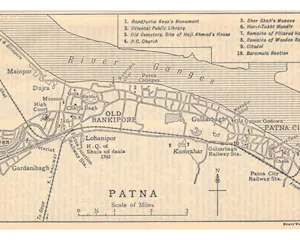Uflex develops game-changer polyester film for pharma packaging
Noida-based flexible packaging giant Uflex has come up with a special polyester film as an alternative to the tradition BOPA and PVC substrates used in cold formed pharma packaging. According to the company, the special polyester film will eventually replace the top and bottom substrates of the conventional cold formed alu–alu laminate to a whole new structure comprising 36 micron special polyester; 50 micron soft aluminium foil and 36 micron special polyester.
20 Feb 2017 | By Rahul Kumar
Conventionally, polyvinyl chloride (PVC) and bi-axially oriented polyamide, BOPA (commonly known as BON) films have been extensively used in cold formed pharma packaging industry. A typical alu–alu blister laminate comprises three layers — 25 micron BOPA; 60 micron soft aluminium foil; and 60 micron PVC.
Eliminating BOPA and PVC films in the cold formed alu-alu laminate blister pack for pharmaceuticals has, for long, remained a daunting task for packaging experts.
A conventional cold formed pharmaceutical blister back, when dumped in a landfill, emits chlorine upon coming in contact with sunlight. This is extremely harmful for the environment. PVC also contains plasticisers with phthalates linked to a host of health disorders that can damage liver, kidneys, lungs and the reproductive system. PVC film leaves high carbon footprint, making it further undesirable from the environmental perspective besides exhibiting very low temperature resistance which is yet another shortcoming.
BOPA (BON), on the other hand, is also fraught with challenges like high moisture absorption to the tune of 8-10%, making its processing difficult; leading to de-lamination and impairing the ability of the film to be chemically primed.
Keeping these challenges of BOPA and PVC substrates in mind, the team at the films business of Uflex undertook extensive R&D activities for almost two years to come up with the special polyester film.
Polyester is a para-crystalline material which possesses excellent barrier, clarity, printability, and hardness properties. Film forming and orientation of polyester augurs well for the creation of thin profile webs with excellent properties for use in flexible packaging.
This specialty film developed by Uflex can be laminated on both sides of the aluminium foil quite like the laminate comprising BOPA, aluminium foil and PVC films. The engineers at Uflex have successfully brought metaphase morphology which has made it possible to form the film in Z direction, a prerequisite for blister packaging.
According to Dr Sudhir Naik, senior general manager, corporate technical services, Films Business, Uflex, getting better functionalities as compared to the alu - alulaminate structure comprising BOPA-aluminium foil-PVC, Uflex has come up with a special polyester film that will have significant and substantial benefits for the converters catering to pharmaceutical brands.
“If we talk about India, BOPA (BON) is imported from countries like China, Korea and Taiwan. Moreover, the converters are left with no option other than managing varied inventories of BON and PVC films separately. With the introduction of our specialised polyester film, the logistical hassles of converters will surely go down. The dependency on import of BOPA will also go down as the converting industry gradually switches over to our new specialised polyester film for cold forming the blister packs. This film, therefore, makes a strong case for import substitution in India,” Naik said.
Pramod Sirsamkar, president, technical and new product development (films), Uflex, added that the moisture absorption of this specialised polyester film is as low as 0.8% working out to almost 92% less than that of nylon. “Aluminium foil, as you know, offers negligibly low oxygen and water vapour transmission rates. Such high barrier may not really be required by the drug packed inside. We are, therefore, also working towards offering high barrier (yet thinner) speciality polyester films as an alternative to aluminium foil that may further lead to the reduction in overall weight of the ensuing laminate. The introduction of specialised polyester film in alu–alu blister packaging as a replacement for BON and PVC films has also opened up avenues for us to come up with biodegradable and oxo-degradable variants further minimising the carbon foot prints. We are also working on developing such speciality films using recycled polyester and green PET that will bolster our commitment towards the environment,” Sirsamkar added.
Amitava Ray, executive director and head of packaging/converting business, Uflex said, “It is incredible that we have been able to replace the existing 25 micron BOPA/ 60 micron soft aluminium foil / 60 micron PVC structure with the new laminate comprising 36 micron special polyester/ 50 microns soft aluminium foil/ 36 micron special polyester films. There is also a yield benefit in the case of the new laminate structure but with no compromise on functionalities whatsoever. This light-weight laminate equates low energy consumption at all the three critical stages of flexible packaging life cycle. The reverse printing on the special substrate has further opened up the avenue for enhanced brand visibility and last mile communication possibilities through the body of the pack.”
Ray added that there is a substantial and growing demand for alu-alu blister packaging in India as well as across the globe. “With the new alu-alu blister laminate structure in place, we at Uflex have been able to engineer a product in India that has way to go in several continents!”
The company will showcase this packaging solution, along with several value-added products for the pharmaceutical industry at Asia Pharma Expo 2017 to be held in Dhaka, Bangladesh from 23 to 25 February 2017.
Ashok Chaturvedi, chairman and managing director, Uflex, said, “This is innovation with value-added differentiation at its purest that fairly and squarely addresses the shortcomings of both BON and PVC films faced by converters catering to the pharmaceutical companies. This film is a great product for the pharmaceutical packaging industry that will raise the bar for competition both in India and overseas thereby being a game changer. When the bar for competition is raised flexible packaging industry as a whole stands to benefit both in terms of quality as well as technology.”














 See All
See All